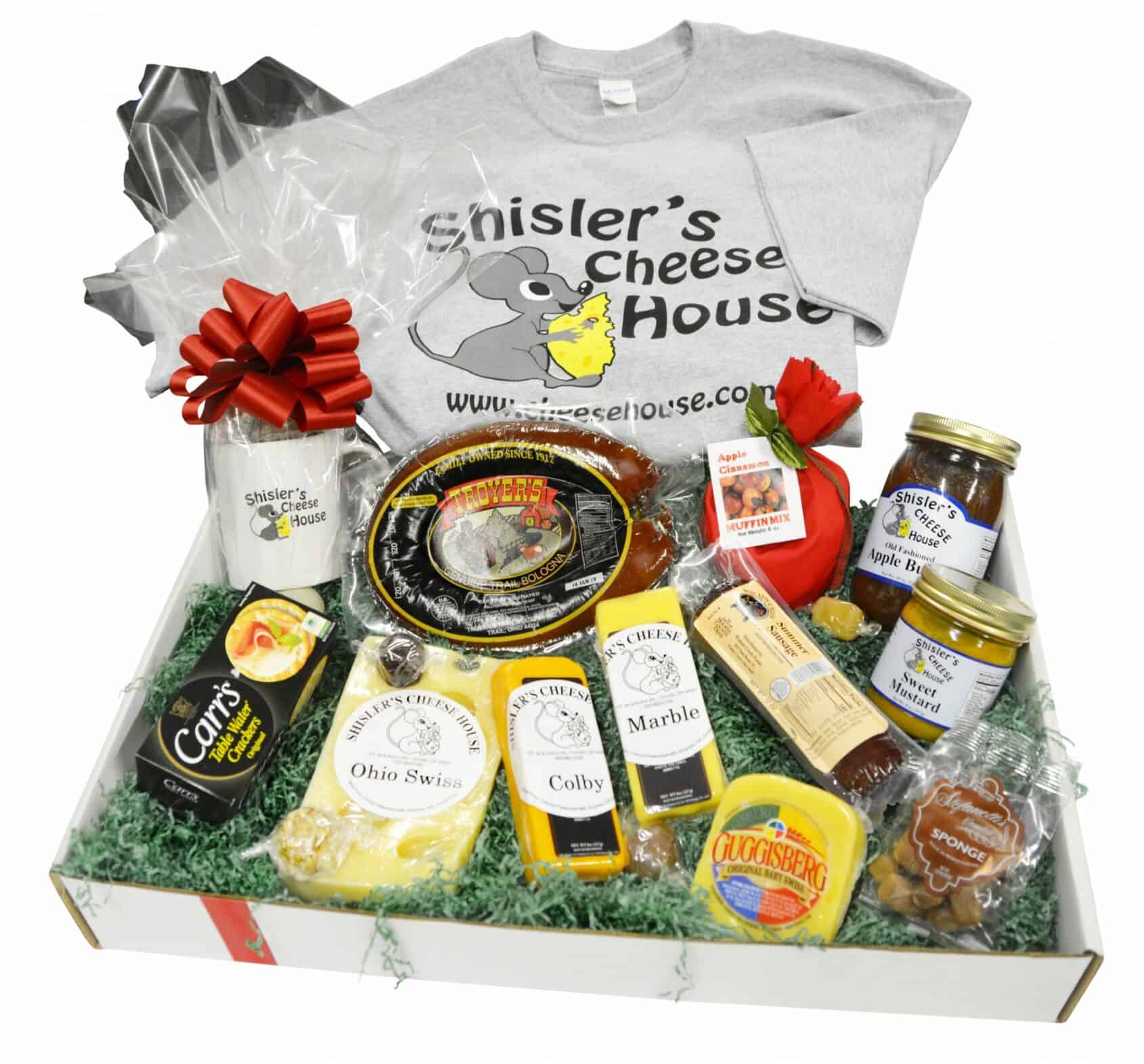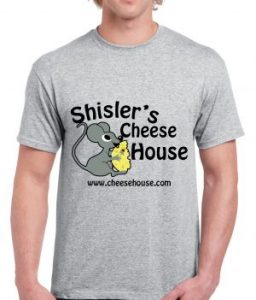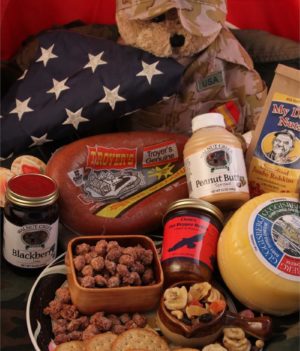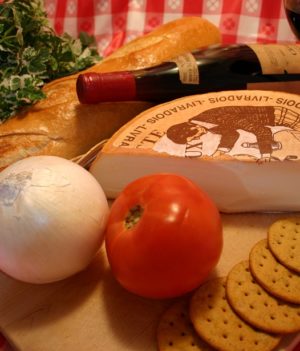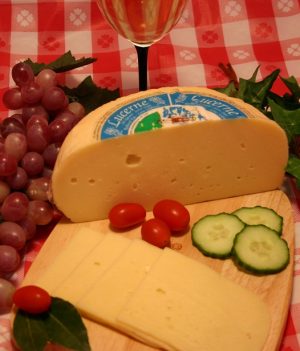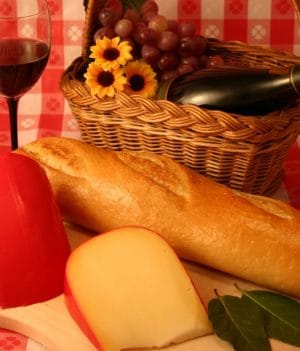Search Results for: swiss
Christmas Gift Boxes for the Whole Family
With Christmas fast approaching, we thought the time had come to remind our lovely customers about our wonderful range of gift boxes.

Our Deluxe Gift Box contains more of our favorite Amish products than ever:
- Troyer’s Trail Bologna Ring 1 Lb.
- Shisler’s Gift Mug with 1/2 Pound of Heggy’s Chocolates
- Shisler’s Private Label Apple Butter
- Shisler’s Private Label Hot Mustard
- Wheel of Colby 3/4 Lb.
- Wheel of Cojack (Marble) 3/4 Lb.
- Block of Swiss Cheese
- Baby Swiss Cheese Wedge
- Summer Sausage Link
- Crackers
- Muffin mix
- Shisler’s Cheese House T-Shirt
The Troyer’s Trail Bologna Ring is a chunky, all-beef bologna with a smoky taste, created by the fourth generation of the Troyer family. Our gift mug helps lovers of Shisler’s Cheese House share their pride as they drink their morning coffee. We’ve filled it with 1/2 a pound of Heggy’s Chocolates.
Shisler’s Private Label Apple Butter is made from the best locally grown Apples and locally produced Amish Butter, perfect for spreading on toast or stirring into your recipes. We also love our Private Label Mustard, which can be used as a dipping mustard or spread into sandwiches.
Colby cheese is a semi-hard cow’s milk cheese native to the United States. It is very mild and creamy. Cojack cheese is a blend of Monterey Jack and Colby cheese, marbled together to create a striking effect. Monterey Jack is a buttery, semi-firm cheese which originated in California. It is usually only aged for around a month, making it a fresh, fairly soft cheese to enjoy.
Swiss Cheese is a holey, semi-hard cheese with a creamy color. It has a nutty, slightly piquant flavor whilst simultaneously being somewhat creamy. You’ll also get a wedge of Baby Swiss Cheese, which substitutes water for the milk’s whey to slow the bacterial action. This creates smaller holes and a milder flavor. With all of this cheese, we’ve given you crackers so that you have something to enjoy it with!
Summer Sausage can be kept without refrigeration, which is how it gained its name. Ours is smoked, rather than dried, with a tangy taste. It’s certainly too good to be kept for only the Summer season. Muffin mixes provide a great way to whip up some quick baking that your guests will love, without any stress.
Finally, because you’re clearly a huge Shisler’s Cheese House fan if you’re digging into this gift box, you’ll find your very own Shisler’s Cheese House t-shirt!
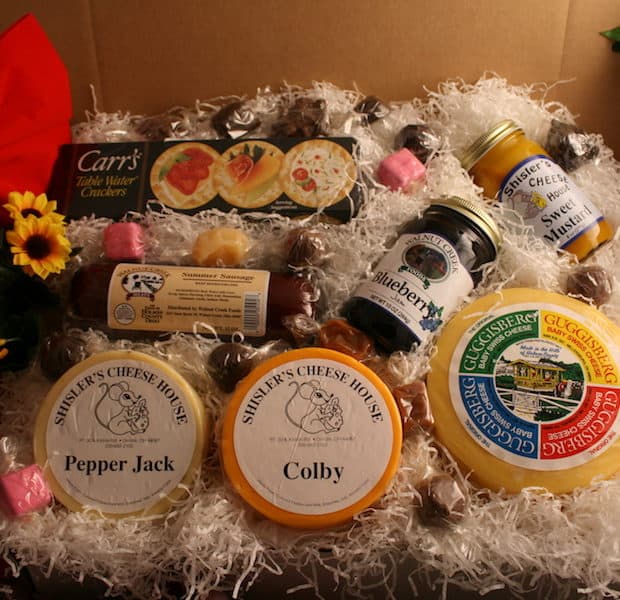
Our Amish Cheese and Goodies collection is another perfect gift for your loved ones this Christmas.You’ll find a 1Lb. Baby Swiss Wheel, a summer sausage link, a ¾ Lb. wheel each of Colby and Pepper Jack cheese, Shisler’s Private Label Mustard, home style Amish jam, Carr’s crackers, assorted chocolates and 6oz. REACH coffee.
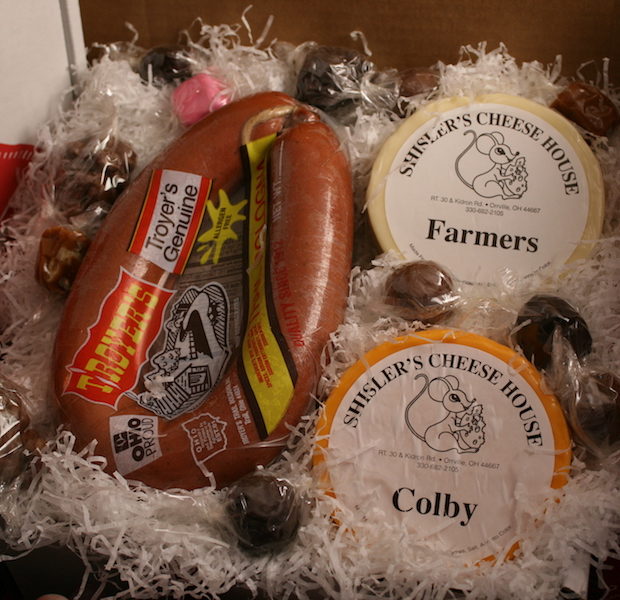
One of our other great gifts is the Troyer’s Trail Bologna and Cheese box. Inside you will find a 1Lb. Troyer’s Trail Bologna ring, a ¾ Lb. wheel each of Colby and Farmer’s cheese and assorted chocolates.
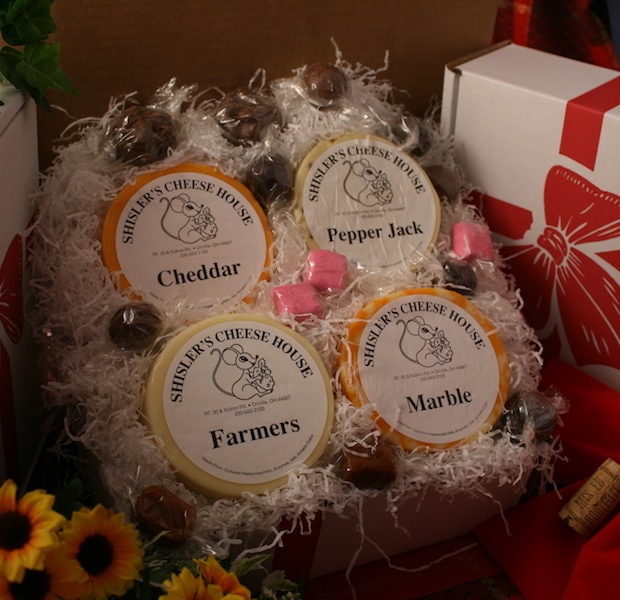
We all know someone who really loves cheese, and that’s why we created the Cheese Lover’s Gift Box. This contains a ¾ Lb. wheel each of Cheddar, Cojack, Farmer’s Cheese and Pepper Jack, along with some assorted chocolates.
Check back in the coming weeks as we’ll share more reminders about our delicious Christmas gift boxes!
Cheese Glossary: The Letters V, W, X, Y and Z!
The time has come; we’ve reached the end of our cheese glossary! Read on to find the cheese terms you need to know from the letters V, W, X, Y, and Z.
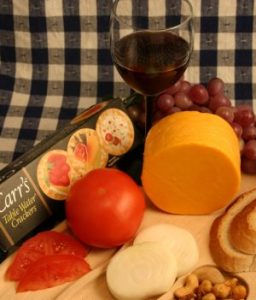
Vegetable Rennets
These are rennets extracted from organic sources such as thistles, nettles, or fig leaves.
Washed Curd
A cheesemaking process in which the curds are drained of whey before being rinsed with water and then stirred to rinse off any lactose that natural bacteria might convert to acid. This raises the moisture level and can hasten the aging process for the curd. One example of a washed curd cheese is Colby.
Washed Rind
This refers to cheeses that have been washed in liquids such as brine, whey, beer, cider,
wine, brandy or oil during the ripening process. This keeps the rind moist and encourages growth of an orange bacteria, which can be scraped off, dried, or left to develop into a full rind. One example of a washed rind cheese is Limburger.
Waxed
A cheese covered in wax. This is done for preservation but also creates a distinctive look for cheeses. Many have a specific wax color.
Waxy
A classification of cheese texture.
Weeping
Swiss-type cheeses that release some moisture from their ‘eyes’ may be said to be ‘weeping’.
Whey
The thin, watery part of milk. It separates from the curds when heated and is usually drained away, although some cheeses use the whey in the production of the cheese.
Xynomizithra
A Greek sheep and/or goat whey cheese that is made on the island of Crete. It is a soft, white and creamy cheese that has a sour taste. It is commonly served with honey as a dessert.
Yaroslavsky
A Russian hard cow’s milk cheese with a slightly sour taste.
Yeast
Yeast are single-celled fungi. There are currently 1,500 discovered species. Yeast can be used to change the flavor and texture of cheeses during surface ripening, as well as affecting the aroma of cheese.
Zakusochny
A Russian soft, blue, cow’s milk cheese.
Zufi
An Italian cow’s milk cheese similar to ricotta that is made in Piedmont.
What was your favorite term from the cheese glossary? Let us know in the comments below! What would you like to learn about next?
Cheese Glossary: The Letter S
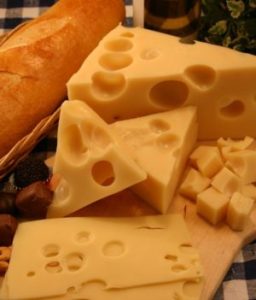
Salting
The process of adding salt to cheese! Salt can be added when the cheese is still in curd form or it can be rubbed on after the cheese is pressed, depending on which cheese it is. A salt solution can also be used. This is known as brining. Whilst some of the flavor of cheese is achieved through salting, the process also preserves the cheese.
Semi-hard
Cheeses vary from hard to soft based on their body and texture. Cheddar and Swiss are examples of semi-hard cheeses.
Semi-soft
Semi-soft cheeses are usually made from whole milk and melt when heated.
Sharp
A flavor term referring to the fully developed flavor of aged cheeses. Cheeses that might be sharp include Cheddar, Provolone and blue-veined cheeses like Danish Blue.
Smoked
Smoked cheese is produced in a similar way to smoked meats. There are various ways to do this including adding smoking over wood or adding liquid smoke to brine. We stock a wide variety of smoked cheeses.
Soft
Cheeses with a high moisture content. They are usually set with the addition of lactic acid cultures and include cheeses such as cottage cheese, mascarpone, and ricotta.
Soft-ripened
These cheeses, such as Brie and Camembert, have a thin white or cream rind that is soft and edible. They are usually soft inside and have a luscious, creamy texture.
Stabilizer
An ingredient added to products, including cheese, to improve consistency and texture.
Starter
A culture that normally has varying percentages of lactic acid, bacteria or mold spores, enzymes or other microorganisms and natural chemicals. Starter cultures control the process of curdling milk during cheesemaking by converting lactose to lactic acid. They can also give the cheese particular flavor and characteristics.
Stirred-curd Cheese
These are sometimes called granular cheeses. They are made in a similar way to cheddar cheese but do not go through the cheddaring and milling process. It tends to have a higher moisture level than other cheeses. The granular aspect comes from the open look to the
cheese.
Stretched
Cheeses that have stretched curds are kneaded with hot water, which gives them a fibrous structure. The most common example would be mozzarella.
Surface-ripened
Cheeses that ripen from the outside in when a mold, yeast or bacteria is applied to the surface.
Swiss
A holey, semi-hard cheese with a creamy color, Swiss cheese has a nutty, slightly piquant flavor whilst simultaneously being somewhat creamy. The process of making Swiss cheese involves natural bacteria consuming the lactic acid in the cheese. This releases carbon dioxide gas, which forms bubbles that become the holes in the cheese. These are often referred to as “eyes”.
We hope that you continue to enjoy our cheese glossary!
Show Your Support This Veteran’s Day
As today is Veteran’s Day and we are passionate supports of our veterans, we wanted to share our Veteran’s Day Care Package with you.
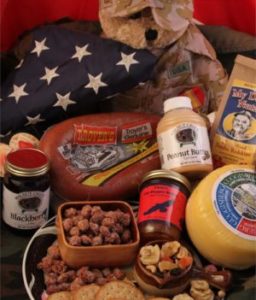
This is a great way to remind our heroes that we still appreciate all they do! It is perfect as a gift for our veterans or as active duty military care packages. We have included less perishable options than some of our other gift boxes, for those who wish to send a care package to military personnel stationed overseas.
There really is nothing like a little taste of home to let our men and women in uniform know they are appreciated. We will ship to any FPO-AP address via U.S. Postal service. We will also show our appreciation for our men and women in uniform by donating a portion of the proceeds from every package sold to The Wounded Warrior Project.
The Veteran’s Day Care Package Includes:
- Baby Swiss Cheese Wheel (2 Lbs.)
- Trail Bologna Ring or Beef Jerky (In non-perishable option)
- Clem’s Hot Pepper Relish – delicious with cheese and crackers!
- Banana Split Mix – cranberries, banana chips, almonds, chocolate covered peanuts, chocolate drops, pineapple tidbits, raisins, yogurt covered peanuts, peanuts, and yogurt drops all mixed together for a great trail mix
- Amish Peanut Butter Spread
- Amish Homestyle Jam
- Carr’s Crackers
We know that you love to show your appreciation and, to us, food is the perfect way to do that.
Here at Shisler’s Cheese House, we also make a range of gift boxes if the Veteran’s Care Package isn’t quite right for you.
Our Football Season Special is perfect for sports lovers. It contains Swiss Cheese, Troyer’s Trail Bologna, Pepper Jack Cheese, Shisler’s Private Label Mustard, Shisler’s Private Label Hot Pepper Relish, and Carr’s Crackers.
The Fall Harvest Collection celebrates the best flavors of fall in Amish Country. You’ll find Baby Swiss Cheese (2 Lbs.), Streb Meats Smoked Sausage (1 Lb.), Cranberry Delight (1 Lb.), Pumpkin Muffin Mix, Pumpkin Butter, and Popcorn on the Cob inside.
If you want to show your support to a beer and cheese lover, then our Beer Collection is absolutely the gift for you. It contains enough Brick, Gouda, Gruyere, and Ohio Premium Swiss Cheese to entertain 20 people. These cheeses have been chosen for their strong flavors which pair beautifully with beer. We recommend trying out a few different beers to compare the tasting experience.
Finally, our Hot Stuff Collection has everything that you might need for someone who lives spice and heat. Enjoy trying Hot Pepper Cheese, Habanero Cheese, Troyer’s Trail Bologna with Hot Pepper Cheese, Shisler’s Private Label Hot Pepper Relish, Shisler’s Private Label Hot Jalapeno Mustard, Hot Pepper Jelly, and Carr’s Crackers. Be warned, you might need a cooling glass of milk on hand.
Do get in touch if you have any questions about any of our gift boxes, but especially if you would like to get a Veteran’s Day care package for a special someone to recognise their service this month.
We’d also love for you to take a look at the work of the Wounded Warrior Project and consider supporting them in their efforts.
Cheese Glossary: The Letters Q and R
A treat for you today: two letters from our cheese glossary!
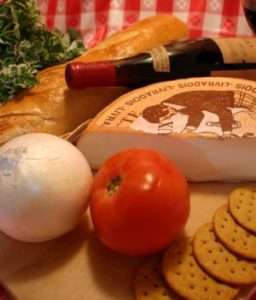
Quarter Wheel
A quarter of a 20-pound wheel of cheese.
Queso
The Spanish word for cheese.
Raclette
Raclette (ra-klet) is a semi-firm, salted cheese made from cow’s milk. It originated in the Swiss canton of Valais, but is today also produced in the French regions of Savoie and Franche-Comté. The term raclette derives from the French racler, meaning “to scrape”. Raclette cheese is heated, either in front of a fire or by a special machine, then scraped onto diners’ plates.
Raclette is mentioned in medieval writings and was then known in the German-speaking part of Switzerland as Bratchäs, or “roasted cheese.” Traditionally, the Swiss cow herders used to take the cheese with them into the mountains. They would cook it by the campfire and scrape it onto bread. Now, electric table-top grills with small pans make the job of melting the cheese easy and fun. Each guest fills their small pan, known as a coupelles, with cheese and melts it before adding it to their plate.
Raw milk
This is simply the term for milk that has not undergone pasteurization.
Rennet
This comes from the membranes of calves’ stomachs and contains rennin, an enzyme. This aids in coagulating milk or separating curds from whey. There are also vegetarian forms of rennet that can be commercially produced from fungi.
Rind
The outer surface of the cheese. Rind can vary from soft to hard as well as in thickness and color. Natural rinds exist but some are produced from a harmless mold.
Rindless
Cheese without a rind. Some of these are not ripened so they won’t develop a rind and others are protected with a coating or plastic film.
Ripening
The aging process that cheese goes through.
Rustic
A term for cheeses that are earthy in flavor and aroma.
Cheese Glossary: The Letters N and O
We return to our cheese glossary for the letters N and O!

Natural
A general term for cheese that has been made directly from milk, whether it is pasteurized or unpasteurized. It can also refer to the cheesemaking process itself of coagulating or curdling the
milk, stirring and heating the curd, draining the whey and collecting or pressing the curd.
Natural Rind
A rind that forms naturally on cheese whilst it is drying and ripening. Ripening agents or washing are not used to create the natural rind. Most semi-hard and hard cheeses will have this, including Parmesan and Romano Pecorino.
Nutty
Cheeses with a nut-like flavor, such as Swiss cheeses.
Oily
This can describe the body, flavor or aroma of a cheese.
Open
A term applied to cheese varieties containing small holes that develop during the manufacturing process. These holes may be small or large, densely patterned or randomly scattered, and irregular in shape. Air might be introduced through punctures made with steel pins, such as in the production of blue-veined cheeses. These pin holes are not the same as the open ‘eyes’ that form during fermentation of cheeses such as Swiss cheese.
Organic
Grown without the use of chemical pesticides or fertilizers.
Overripe
A cheese that has gone past its best. It has likely become too soft.
Ovolini
A ball of fresh mozzarella, weighing approximately four ounces.
Oxidation
This can cause cheese to become bleached or dry, depending on how it has been packaged.
We have come to the halfway point of our cheese glossary and we are really enjoying teaching you all about the different terms associated with cheese. We hope it is helping you to learn more about the cheeses that you love. What would you like to learn about next? Let us know in the comments below and we will make it the focus of our next set of posts!
Cheese Glossary: The Letter L
It’s time to return to the cheese glossary. Onto the letter L!
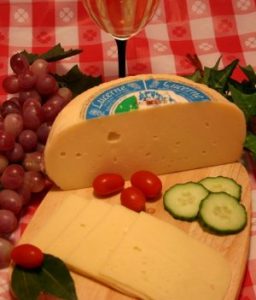
Lactose
A type of sugar found naturally in milk.
Lacy Swiss
Lacy Swiss was invented by Alpine Lace Brands in 1985 in response to the growing need for healthier alternatives. This cheese is closely related to Swiss cheese, but the whole milk used to produce swiss cheese is replaced with low fat milk to provide a healthier alternative with a lower fat content. It gets its name from the lacy appearance of the slices, which usually have a creamy, ivory color to them. It has a delightfully light and nutty flavor. If you follow a lactose-free diet, then this cheese is naturally free of lactose.
Lacy Baby Swiss
Lacy Baby Swiss is a young, semi-soft cheese distinguishable by its myriad of small holes. Baby Swiss is made by substituting water for the milk’s whey to slow bacterial action compared to a traditional Swiss Cheese. The Lacy version has smaller holes and a milder flavor, as well as the lower fat and sodium content found in Lacy Swiss.
Limburger
Limburger is rated as one of the stinkiest cheeses in the world! It is a spreadable cheese with an almost bitter flavor. A rind washed cheese, it has a distinct brown-colored rind with semi-soft, ivory cheese inside. It can be quite mild but it also has a distinct grassy and mushroom taste. The aftertaste has a tang to it.
The bacteria Brevibacterium linens causes the odor and the maturing process which creates Limburger. When it is young it has a firm, crumbly texture with a salty flavor, like feta. At six weeks, the edges soften but the center stays firm. By two months it is almost all smooth and creamy and by three months it develops its intense smell and flavor. Limburger originated in the historical Duchy of Limburg, which is now divided between modern-day Netherlands, Belgium, and Germany. However, most Limburger today comes from Germany. Only one company in the United States still makes it, the Chalet Cheese Cooperative of Monroe, Wisconsin. We’re proud to source our Limburger Cheese from Wisconsin.
Lipolysis
This refers to a process that takes place during cheesemaking. Milk contains a fat (or lipid) called triglyceride. Using enzymes called lipases, the fatty acids in triglyceride are separate from the glycerol. They become free fatty acids that have taste and aroma. Without this process, cheese would be incredibly bland.
Lucerne
Lucerne Cheese is a young, semi-soft cheese with small holes, somewhat similar to Baby Swiss. It has a very mild flavor that is both light and smooth. It’s also lower in fat and sodium than Swiss cheese, making it a delicious favorite for those counting calories or watching their sodium intake.
Is there anything else you would like us to define in the cheese glossary? Let us know in the comments!
Cheese Glossary: The Letter H
It’s time for the letter H in our cheese glossary.
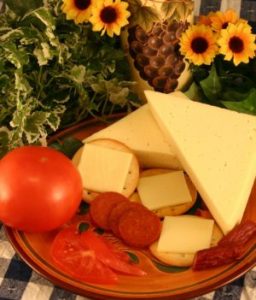
Half-wheel
Sometimes called a split. Wheels of cheese are sometimes split horizontally or vertically, mostly so that shops can take less cheese at once.
Halloumi
A semi-hard, unripened, brined cheese made from a mixture of goat’s and sheep’s milk. It is og Greek origin and is salty and slightly squeaky. It can be grilled or fried because it has such a high melting point, making it a great cheese for salads and using as an alternative patty for burgers. It is sometimes aged which gives it a much stronger flavor than the brined version usually available.
Hard
Hard cheeses are those that have been aged so that they have a lower moisture content than fresh cheese. They are often dry and crumbly. Hard cheeses include Parmesan, Gruyere, and Cheddar.
Harp
A tool with cutting wires used to cut the curds.
Hard-grating
Cheeses that are well-aged and easily grated. Often they are used in cooking or at the table to add a finish to a dish. These include Parmesan, Romano Pecorino and Asiago.
Havarti
Havarti Cheese or Cream Havarti (Fløde Havarti in Danish) is a semi-soft Danish cow’s milk cheese. It is rindless, with a smooth surface and a cream or yellow color depending on the type. It has very small and irregular eyes (holes). It has a buttery aroma and a generally sweet taste with a slightly acidic tang. Havarti can be sharp in the stronger varieties, resembling Swiss cheese. It is a washed curd cheese, which contributes to the subtle flavor of the cheese. The cheese will usually be aged for around three months and as it ages it becomes saltier and nuttier.
We also stock Havarti with Dill and Havarti with Caraway for those looking for additional flavor. Dill combines the flavors of fennel, anise, and celery, with a slight bitterness, whilst caraway has a very pungent, earthy anise flavor.
Heat-treated
Milk that is subjected to heat in order to eliminate pathogens and organisms, but at a lower heat than is required for pasteurization. This can have less of an effect on the taste than a full pasteurization process.
Homogenization
A process that breaks down the fat globules found in milk and then incorporates them. This stops the cream from separating and rising to the top.
Hooping
The process of putting fresh curds into mold forms.
Hot Performance
This is simply a term for the response a cheese has to heat.
As always, please get in touch if there is something you want to learn about cheese that we haven’t yet covered! We’re always keen to add more to the cheese glossary as we go along.
Happy Birthday Danny Shisler!

Danny 1955
Danny would be 82 tomorrow had we not lost him suddenly in 2004. But his lagacy lives on in all that we do here at Shisler’s Cheese House!
Growing Up
Dan Shisler was born in Dalton in 1937 and graduated from Dalton High School in 1955. He was one of the best baseball players that ever came out of Dalton High School. He played for Ohio University and got drafted into the St. Louis Cardinals. Then came a shoulder injury that abruptly ended his pro baseball career.
Buying the Cheesehouse
So in 1959 he came back home and bought Shisler’s Cheese House, then a brand-new fledgling business, from his father, John Shisler. Dan quickly tripled the size of this business, with hard work and ingenuity in the retail. He was the one who developed our cherished concept of treating every customer like family.
Shipping Cheese
Dan also started the shipping division of our business to serve locals who had moved out of the area. Back then, he had to vacuum-pack the products himself using a shop-vac and plastic bags made pliable in a bucket of hot water. We didn’t have the insulated shipping containers, the frozen gel packs, or dry ice we use to keep the products fresh today. Trail Bologna and Swiss Cheese were the only product he shipped, and he could only ship to the warmer climates during the winter months. Dan prided himself in finding the right size box, and would do a little happy dance when when we drove to Canton to drop the packages off at UPS.
The shipping division wasn’t very profitable at the time due to the effort and additional costs involved. But he seemed to do it out of a sense of service to his loyal long-term customers.
Today, we ship to all 50 states and over 30 countries year-round, and our shipping division is rapidly approaching our retail division as our primary business model. He had the foresight into the value of direct shipping long before Amazon was born.
Legacy
Going from a professional baseball player to a cheese monger may not have been Dan’s dream. But he left a legacy of a successful retail business behind that has continued to thrive for 61 years.

Dan and His Two Boys: D.J. and Dennis
We miss you, Dan. We are sure you are cutting lots of cheese in heaven and playing baseball every day, reciting the scores of every professional game in history and still dreaming of the St. Louis Cardinals. DJ and Dennis have followed in your footsteps in the cheese business. We still joke about your vacuum packing methods back then. we still remember you joking with the customers and keeping the landscaping around the store to perfection.
We love you, and are proud of three generations of Shislers , thanks to your hard work and dedication. The fourth generation is already becoming active in the business. HAPPY BIRTHDAY, DANNY SHISLER….hope you and the angels are playing baseball and still savoring cheese today.
Cheese Glossary: The Letter G
The cheese glossary continues with the letter G!

Gamey
This refers to flavors and aromas which strongly reflect the animal from which the milk came. Goat’s cheese, for example, is often described as gamey.
Glaeslet cracks
The parallel cracks that appear in Swiss cheese with no eyes.
Gouda
Gouda is a yellow cow’s milk cheese with a red or yellow wax coating. It is made by culturing and heating the milk until the curd separates from the whey. Some of the whey is then drained, and water is added. This is called “washing the curd”, and creates a sweeter cheese, as the washing removes some of the lactic acid. As it ages it develops a caramel sweetness and sometimes has a slight crunchiness from salt-like calcium lactate or tyrosine crystals. Gouda was named for the province in south Holland where it was originally developed.
Grainy
A descriptive term for the gritty texture which is desirable in certain hard-grating cheeses, such as Parmesan and Romano. It should not go so far as to be mealy. Grainy can also describe a wheat-reminiscent taste found in some cheeses.
Grana
This comes from the Italian word for grain and refers to a group of hard, grainy cheeses. These include Asiago, Grana Padano and Sapsago.
Gruyere
Gruyere (groo-yair) is one of our favorite imported cheeses. Some call it a French cheese while others insist it is from Switzerland. It originated in the Alpine region between Switzerland and France in the eleventh century. It was named after the town of Gruyères in Switzerland, and originated in the cantons of Fribourg, Vaud, Neuchâtel, Jura, and Berne. Before 2001, when gruyere cheese gained Appellation d’Origine Contrôlée (AOC) status as a Swiss cheese, some controversy existed whether French cheeses of a similar nature could also be labeled Gruyere cheese. French gruyere-style cheeses must have holes according to French agricultural law, whereas holes are usually not present in Swiss gruyere.
Gruyere Cheese is sweet but slightly salty. It has a flavor that varies widely with age. It is often described as creamy and nutty when it is young, becoming more assertive, earthy, and complex. When fully aged, after five months to a year, it tends to have small holes and cracks which impart a slightly grainy mouthfeel. It is a good melting cheese.
As always, let us know if you have any questions or words for us to define in the cheese glossary in the comments below. We hope that this series is helping you to learn more about cheese. If you ever have questions that need a more in-depth answer and you are local then do pop into the store. We always love to have a chat about cheese with our amazing customers!

